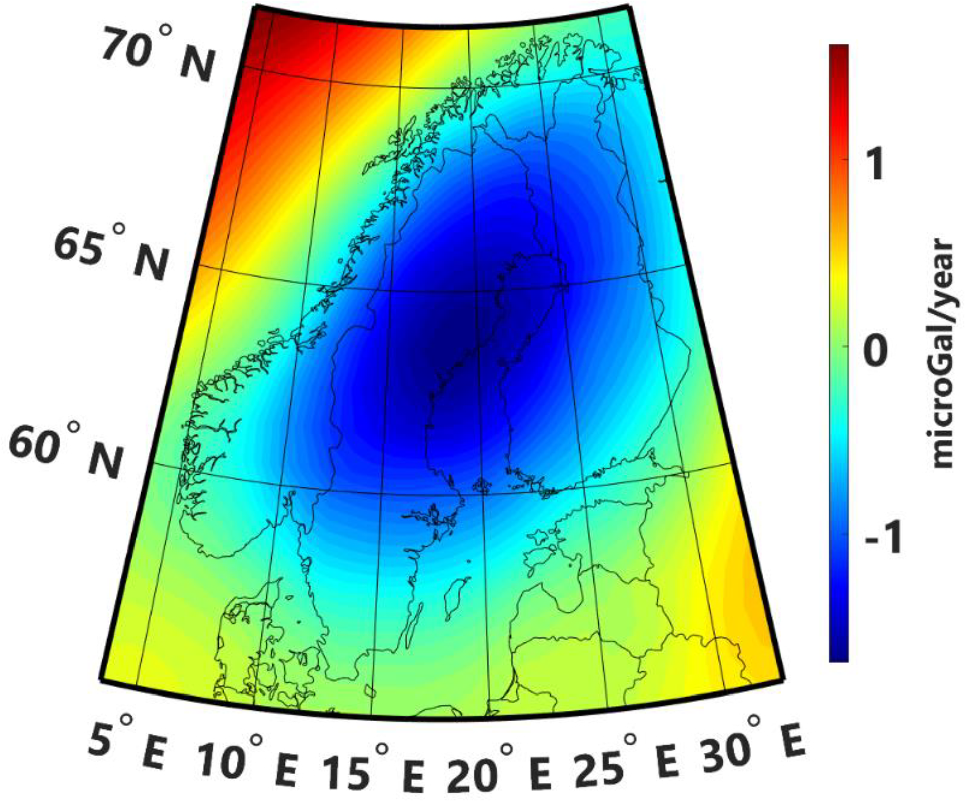2025-02-03 スウェーデン王立工科大学(KTH)
<関連情報>
- https://www.kth.se/en/om/nyheter/centrala-nyheter/as-scandinavian-peninsula-rises-from-sea-new-satellite-data-shows-gravity-changes-1.1383092
- https://link.springer.com/article/10.1007/s00190-024-01921-7
フェノスカンジアにおけるGIAに関連した地表重力対高度の変化に関する短いメモ A short note on GIA related surface gravity versus height changes in Fennoscandia
Mohammad Bagherbandi & Lars E. Sjöberg
Journal of Geodesy Published:13 December 2024
DOI:https://doi.org/10.1007/s00190-024-01921-7

Abstract
Vertical land motion and the redistribution of masses within and on the surface of the Earth affect the Earth’s gravity field. Hence, studying the ratio between temporal changes of the surface gravity (g˙) and height (h˙) is important in geoscience, e.g., for reduction of gravity observations, assessing satellite gravimetry missions, and tuning vertical land motion models. Sjöberg and Bagherbandi (2020) estimated a combined ratio of g˙/h˙ in Fennoscandia based on relative gravity observations along the 63 degree gravity line running from Vågstranda in Norway to Joensuu in Finland, 688 absolute gravity observations observed at 59 stations over Fennoscandia, monthly gravity data derived from the GRACE satellite mission between January 2003 and August 2016, as well as a land uplift model. The weighted least-squares solution of all these data was g˙/h˙ = − 0.166 ± 0.011 μGal/mm, which corresponds to an upper mantle density of about 3402 ± 95 kg/m3. The present note includes additional GRACE data to June 2017 and GRACE Follow-on data from June 2018 to November 2023. The resulting weighted least-squares solution for all data is g˙/h˙ = − 0.160 ± 0.011 μGal/mm, yielding an upper mantle density of about 3546 ± 71 kg/m3. The outcomes show the importance of satellite gravimetry data in Glacial Isostatic Adjustment (GIA) modeling and other parameters such as land uplift rate. Utilizing a longer time span of GRACE and GRACE Follow-on data allows us to capture fine variations and trends in the gravity-to-height ratio with better precision. This will be useful for constraining and adjusting GIA models and refining gravity observations.


